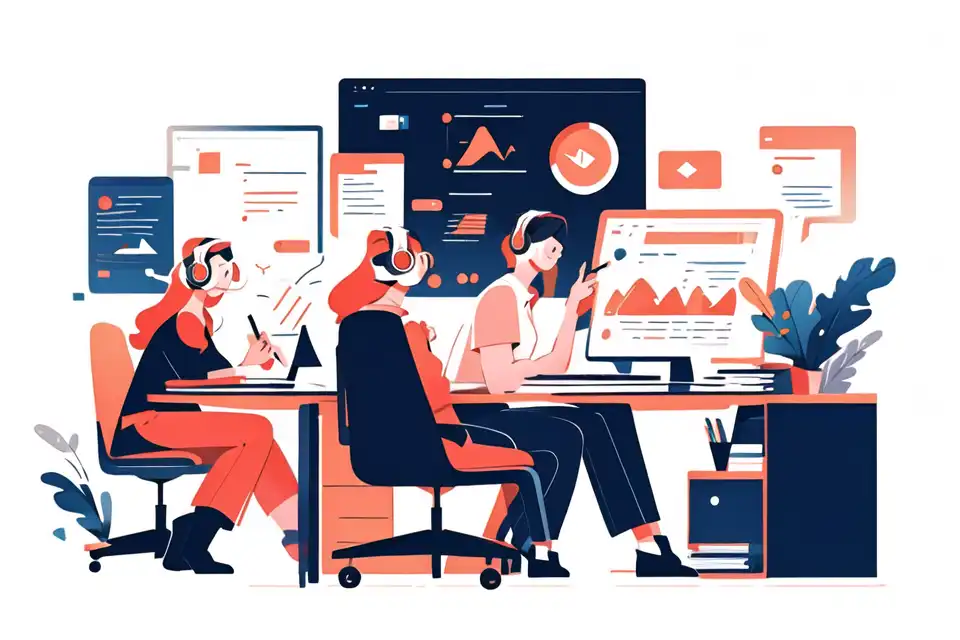How to Request Technical Support Professionally
Master the art of professional communication in business settings with expert guidance. Learn how to request technical support professionally.
Try Lark for Free
Effective communication when seeking technical support is essential for a smooth and efficient resolution of issues. It allows for a clear understanding of the problem and ensures that support personnel can provide relevant and accurate assistance promptly. In this guide, we will explore the significance of understanding how to request technical support professionally and provide practical examples, step-by-step instructions, and helpful best practices.
Why is it important to understand how to request technical support professionally
Effective communication when seeking technical support is crucial for several reasons:
-
Enhances Problem-Solving Efficiency: Clear and professional communication provides support personnel with a precise understanding of the issue, expediting the troubleshooting process.
-
Builds Positive Rapport with Support Personnel: Professional conduct fosters a positive working relationship with support teams, leading to better assistance and more favorable solutions.
-
Ensures Timely and Accurate Resolution of Issues: Assertive yet professional communication ensures that the support team can identify and address the problem accurately and promptly, minimizing downtime.
Use Lark Messenger to elevate your team communication.
Practical examples of dealing with how to request technical support professionally
Example 1
Example 1
A Typical Scenario When You Don’t Know How to Request Technical Support Professionally
You encounter a technical issue while working on an urgent project and are unsure how to request assistance professionally.
Common Mistakes Made in This Scenario
-
Using impolite or demanding language in the request.
-
Failing to provide essential details about the issue, leading to a prolonged resolution process.
Best Expression in Quotes for the Scenario
"Hello, I am currently facing an issue with [specific problem]. I would greatly appreciate your assistance in resolving this matter in a timely manner."
Through this example, it becomes evident that maintaining a professional tone and clearly articulating the issue can yield more positive outcomes when requesting technical support.
Example 2
Example 2
A Typical Scenario When You Don’t Know How to Request Technical Support Professionally
You encounter an error message on a critical software application but are uncertain about the best way to seek technical assistance.
Common Mistakes Made in This Scenario
-
Expressing frustration or impatience in the request, which may lead to a negative interaction with support personnel.
-
Failing to outline the steps already taken to address the issue, resulting in duplicated efforts by the support team.
Best Expression in Quotes for the Scenario
"Good day, I hope this message finds you well. I've encountered an error message [provide details] while using [specific software]. I've already attempted [briefly list efforts made] to resolve the issue, but it persists. I kindly seek your expert guidance to rectify this matter."
Even in moments of technical frustration, maintaining professional communication can significantly aid in the support process.
Example 3
Example 3
A Typical Scenario When You Don’t Know How to Request Technical Support Professionally
You experience a sudden malfunction in a hardware device and are unsure of the appropriate manner to request assistance.
Common Mistakes Made in This Scenario
-
Being overly technical in the description, assuming the support team's level of understanding.
-
Failing to convey the urgency of the situation without sounding demanding.
Best Expression in Quotes for the Scenario
"Dear Support Team, I am currently facing a critical malfunction in [describe the device]. Given its impact on my daily workflow, I kindly request prompt attention to resolve this issue."
Through this example, it is evident that clarity and professionalism in the request can effectively communicate urgency without being overbearing.
Example 4
Example 4
A Typical Scenario When You Don’t Know How to Request Technical Support Professionally
An unexpected technical glitch disrupts your workflow, and you are unsure about the appropriate protocol for seeking assistance.
Common Mistakes Made in This Scenario
-
Failing to acknowledge the support personnel's expertise and attempting to dictate the troubleshooting process.
-
Using overly casual language, which may undermine the severity of the issue.
Best Expression in Quotes for the Scenario
"Hello Support Team, I have encountered an unexpected technical glitch that is affecting my [specific task]. I trust in your expertise to guide me through the resolution process in a timely manner."
This example illustrates the importance of acknowledging the support team’s proficiency and maintaining a professional tone even in urgent situations.
What are the consequences of not knowing how to request technical support professionally
Understanding how to request technical support professionally is crucial as it can have the following consequences:
-
Delayed Issue Resolution: Poor communication or unprofessional conduct can lead to misunderstandings and prolonged resolution times.
-
Frustrated User Experience: Inadequate communication may result in a frustrating experience for the user, impacting productivity and satisfaction.
-
Strained Relationship with Support Providers: Inappropriate communication can strain the working relationship with support teams, potentially impacting future assistance.
Learn more about Lark x Communication
Use Lark Messenger to elevate your team communication.
Methods of phrasing how to request technical support professionally
Method 1: Polite and Clear Language
Using polite and clear language sets the tone for a respectful and constructive communication process, fostering a positive support experience.
Method 2: Structured and Concise Message Format
Organizing your communication in a clear and concise manner aids support personnel in understanding and addressing the issue promptly.
Method 3: Highlighting Urgency Without Being Demanding
Effectively communicating the urgency of the matter without being demanding or imposing can prompt timely and considerate assistance.
Do's and don'ts when you don't know how to request technical support professionally
| Do's | Don'ts |
|---|---|
| Clearly explain the issue and any | Use aggressive or demanding language. |
| troubleshooting steps taken. | Provide incomplete or vague details about |
| Use polite and professional language in | the issue. |
| all communications. | Assume technical knowledge on the part |
| Provide necessary details and context | of the support team. |
| to aid support resolution. |








